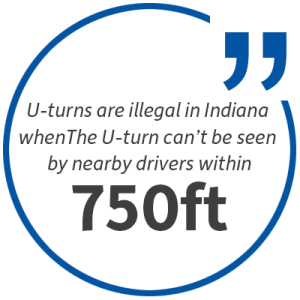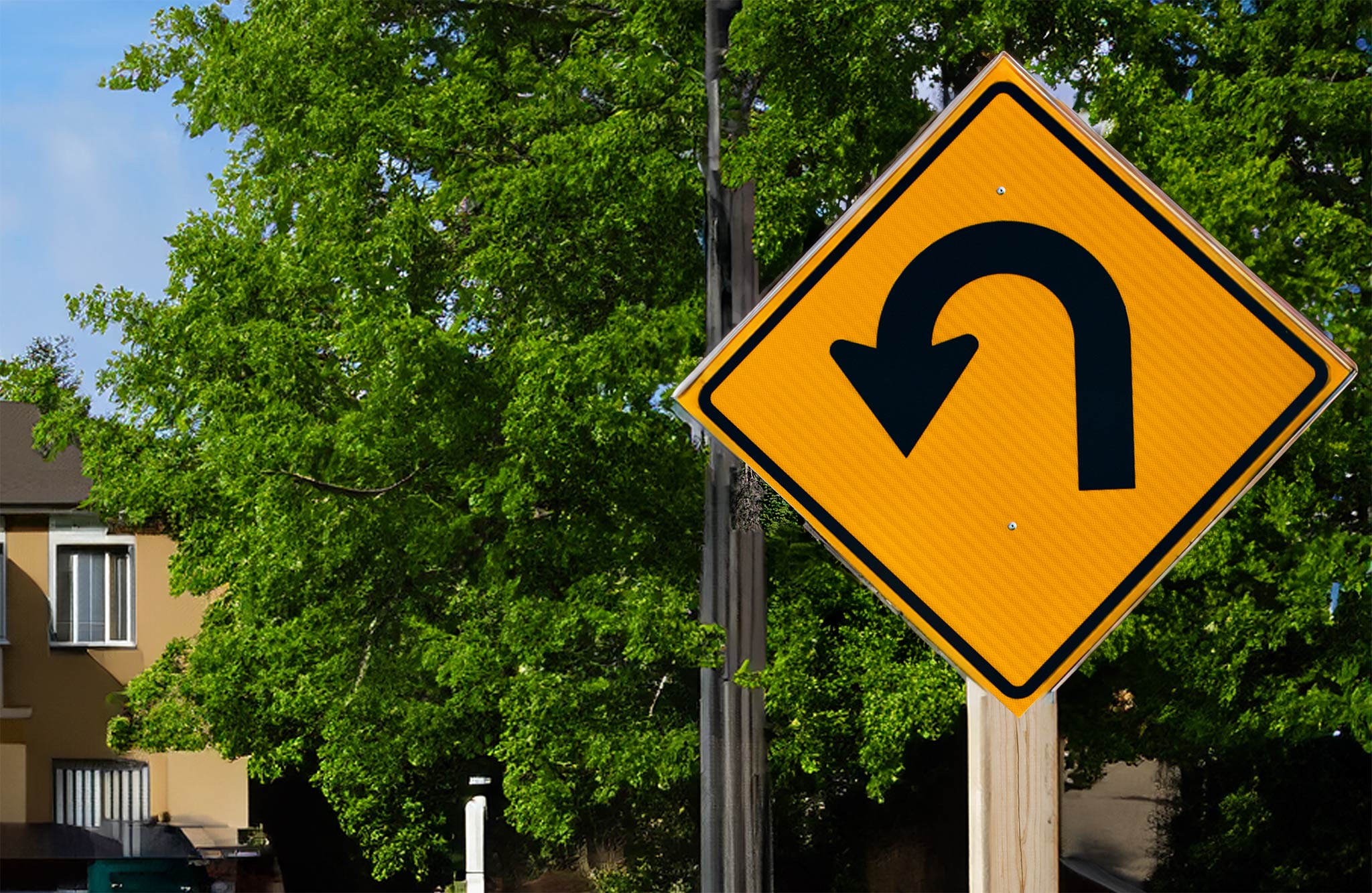Were you in a U-turn accident? If someone was making a U-turn when they hit you, the crash may have come as a complete surprise.
U-turns create tricky accident scenarios. When one car is suddenly facing the opposite direction in traffic, other drivers can be caught off guard.
Are U-Turns Legal in Indiana?

U-turns are legal in Indiana unless they’re in prohibited zones, including those that have poor visibility within 750 feet. Prohibited zones include those with posted “No U-turn” signs and specific areas of the roadway, including the following.
U-turns are illegal in Indiana when:
- Taking a curve
- Approaching or near the crest of a graded road
- The U-turn can’t be seen by nearby drivers within 750 feet
There are other situations where U-turns create added danger. For example, during a heavy rainstorm, it might be difficult to see whether there’s ample room to make a safe U-turn. While the U-turn might be technically legal in this location, it would be risky to whip around into a U-turn in these driving conditions.
Beware of making a U-turn on roadways with busy nearby driveways and intersections, like a shopping mall entrance or a driveway where trucks come and go from a factory. Ensure your U-turn won’t bring you into the path of another vehicle.
Are U-Turns in Residential Areas Legal?
In Indiana, U-turns in residential districts are legal as long as there isn’t a “No U-Turn” sign and no vehicles are approaching within 200 feet. Your U-turn should stay within the posted speed limit and shouldn’t put other vehicles or people in harm’s way.
When making a U-turn in a residential area, keep an eye out for pedestrians and cyclists. They won’t be expecting you to make a sudden U-turn and you wouldn’t want to cause a pedestrian accident.
Tips for Making Safe U-Turns
Stay safe on the road by avoiding U-turns in dangerous areas and watching out for other drivers who are making U-turns near you. Here are some tips for preventing U-turn accidents.
- Never make a U-turn across a median with no roadway or a grassy area.
- Don’t make U-turns over or near railroad tracks.
- Think twice about making a U-turn in a busy area, like a shopping district.
- Don’t make your U-turn until you have a clear line of sight all around you.
- Avoid U-turns when the weather is bad and is causing poor visibility.
- Avoid U-turns in construction zones and school zones.
- Watch out for emergency vehicles while making U-turns.
- Always look out for posted “No U-turn” signs.
The best place to make a U-turn is usually a median with a paved path designed for traffic. This type of median gives the driver a resting place to observe traffic and plan the U-turn before making it.
Of course, you can’t assume that every median is legal for U-turns. Look around for a “No U-turn sign” and determine whether there is something else nearby that might prohibit a U-turn, like a sharp curve or poor visibility for oncoming traffic.
U-Turn Accident: Who’s at Fault? Ask Crossen Law Firm
After your accident, determining who’s at fault might not be easy. There could be conflicting opinions about the circumstances of the crash. Even the witnesses who saw the accident or the officer who wrote the police report might disagree with you about what happened.
Despite these challenges, establishing fault is an essential aspect of handling Indiana car accident claims. Indiana uses a legal concept known as modified comparative negligence. You can only receive compensation in a lawsuit if you have less than 51% of the fault.
If you’re eligible to claim compensation, it will be reduced by your share of fault. On a positive note, you can still claim partial compensation even if you were partially at fault.
Starting a car accident claim could bring you a successful result that covers many of your costs. You may be able to claim compensation for your medical bills, vehicle repair costs, lost wages, lost earning capacity, emotional suffering, and more.
Contact the Indiana car accident lawyers at Crossen Law Firm to discuss who’s at fault for your U-turn accident and which legal options are open to you. You deserve representation from an experienced legal team that makes it a priority to help injured clients recover the maximum possible compensation.
Call 317-401-8626 for a free consultation or contact us online.

 317-401-8626
317-401-8626 
.jpg)